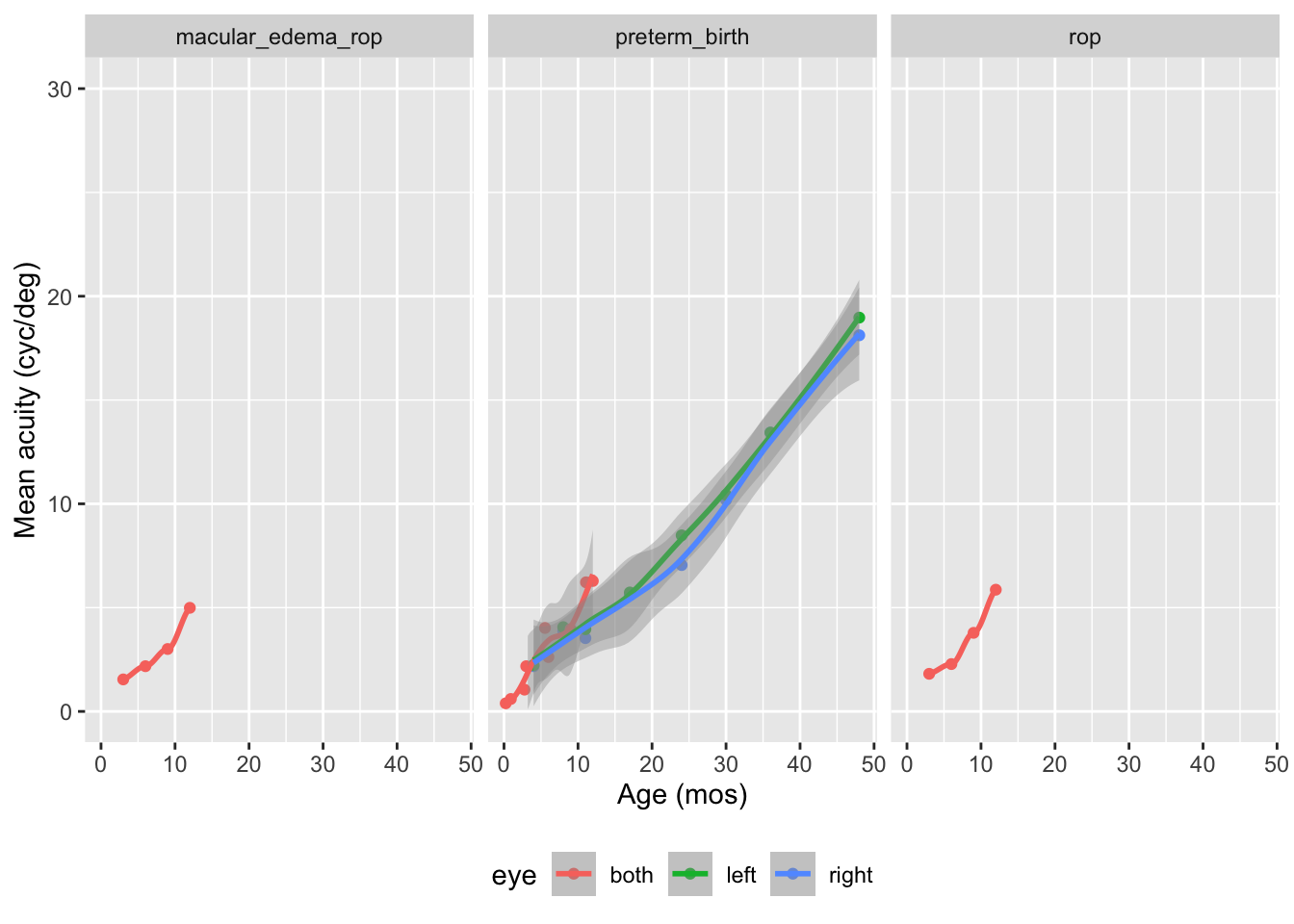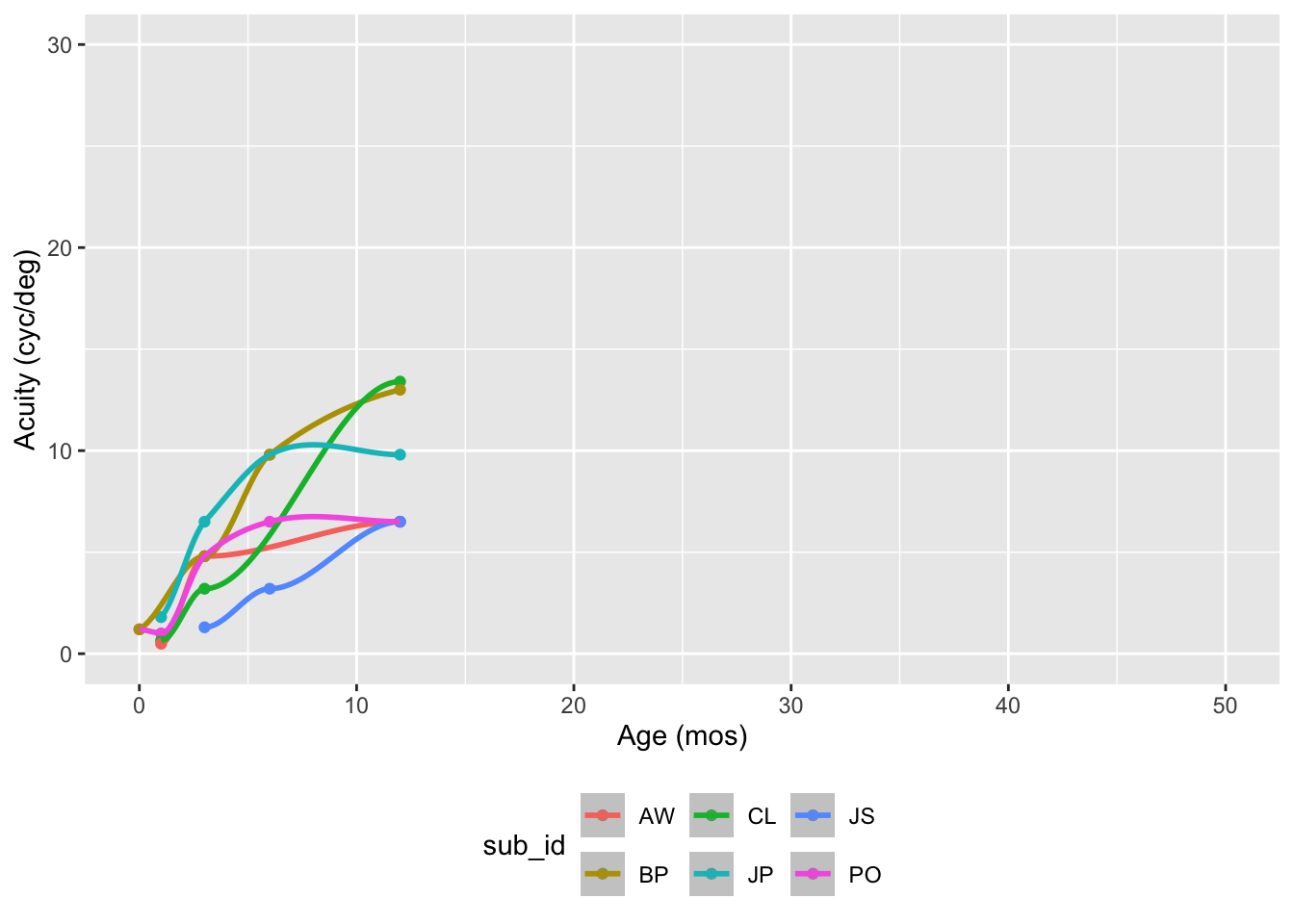
Synthesizing evidence about developmental patterns in human visual acuity as measured by Teller Acuity Cards
Aims
Replication is a cornerstone of scientific rigor and a prerequisite for cumulative science. This project synthesized evidence from published research that employed a widely used measure of grating visual acuity (VA), Teller Acuity Cards (TAC). We sought to capture findings about the development of VA in early childhood into an aggregated dataset and share the dataset openly.
Methods
- Paper search
- Paper filtering, evaluation
- Data aggregation, cleaning
- Data visualization
Results
Sources Synthesized
| Category | n | Comments |
|---|---|---|
| Found in search | 751 | Terms: “teller acuity cards”, “visual acuity cards”, or “teller cards” |
| Had PDFs or full text versions | 433 | Continuing to seek additional papers |
| No PDF/full text available | 318 | |
| Extractable data | 27 | Includes data summarized by others. |
Typically developing children

Results: Aypically developing children

Individual data: Typically developing children

Conclusions
Synthesizing evidence about core facets of human visual development is important and illuminating.
Idiosyncratic practices for reporting data in published papers makes evidence synthesis challenging.
Future work will involve contacting individual researchers to seek unpublished or more complete datasets from published work.
Vision scientists should adopt open data sharing practices more widely.
Data availability
Data and code used in the preparation of this report are available at: https://gilmore-lab.github.io/visual-acuity.